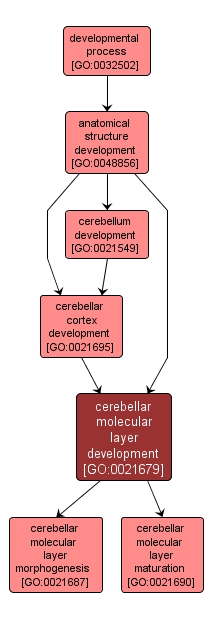| Desc: |
The process whose specific outcome is the progression of the cerebellar molecular layer nerve over time, from its formation to the mature structure. The molecular layer is the outermost layer of the cerebellar cortex. It contains the parallel fibers of the granule cells, interneurons such as stellate and basket cells, and the dendrites of the underlying Purkinje cells. |














